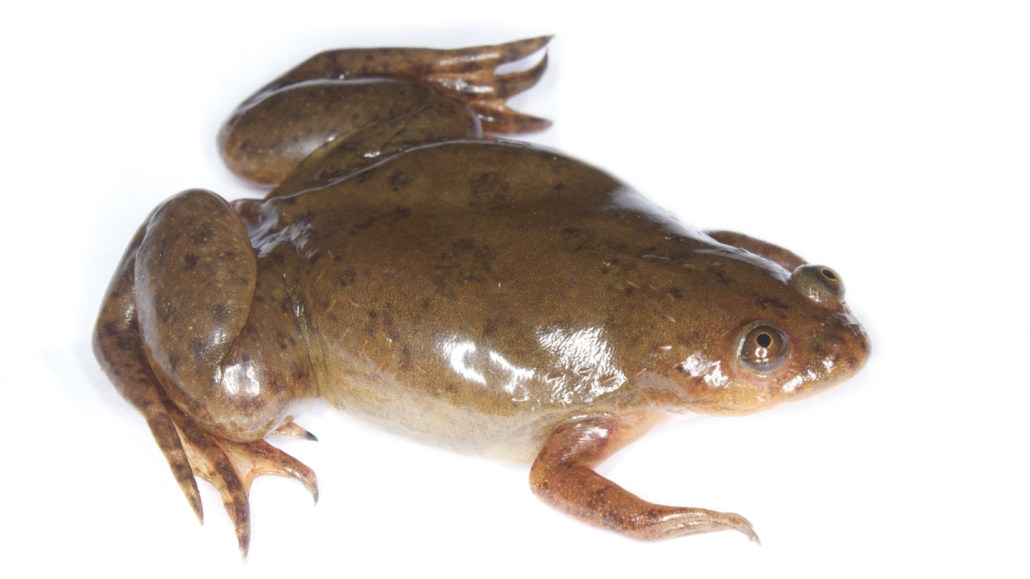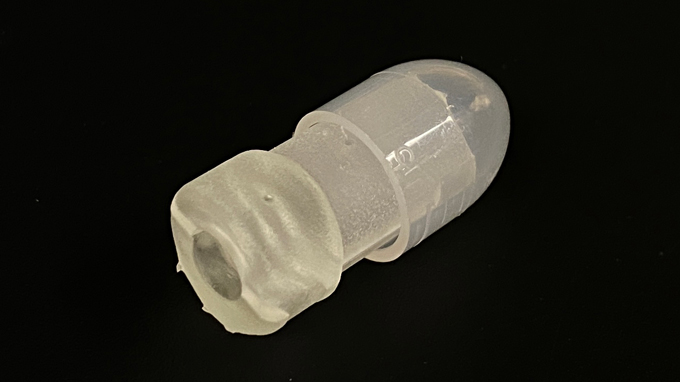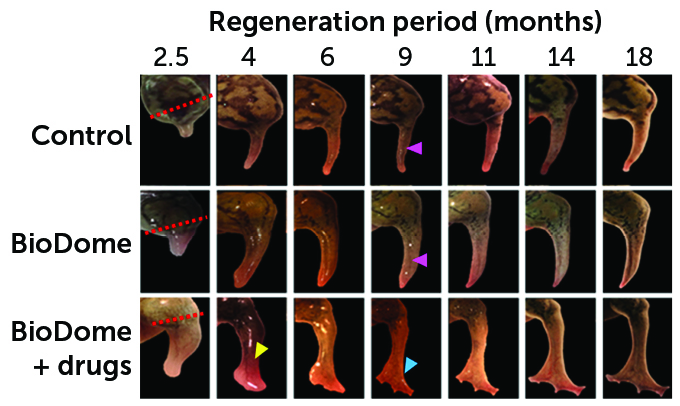
Adult African clawed frogs can’t fully regenerate amputated body parts on their own. But a device holding a chemical cocktail at the wound site coaxed some to regrow useful limbs.
Brian Gratwicke/Flickr (CC BY 2.0)
- More than 2 years ago
The cells of adult frogs seem to remember how to regrow lost legs, and a new chemical kick starter helps them hop to it.
Scientists have been seeking ways to spur the body to regrow limbs to help people that have undergone an amputation (SN: 6/12/13). Like adult humans, fully grown frogs have a limited ability to replace lost body parts. But a new treatment — a device that delivers a drug cocktail — jump-starts and improves limb regeneration after amputation in frogs, researchers report in the Jan. 26 Science Advances.
“The cells of the frog already know how to make frog legs,” having done so when the animal was a developing embryo, says Michael Levin, a developmental biologist at Tufts University in Medford, Mass. “Our goal is to figure out how to convince them to do it again.”
Levin’s team amputated the right back legs of 115 adult African clawed frogs (Xenopus laevis) at the knee. Roughly one-third of those frogs received “BioDomes,” silicone sleeves that cover the wound. To another third of the frogs, researchers attached BioDomes holding a silk-based gel that contained five chemicals, including a growth hormone, a nerve growth promoter and an anti-inflammatory substance. The BioDomes stayed on for 24 hours and then were removed from the frogs’ legs. The remaining third didn’t receive any treatments before being placed back in their tanks.

In animals that received the drug cocktail, “around the four-month mark, we started to see a slight difference in the leg shape,” says Nirosha Murugan, a cancer biologist now at Algoma University in Sault Ste. Marie, Canada. “With time, that bud … started to take shape into a whole leg.”
After 18 months, the frogs that received the chemicals had regrown the limbs and had nubs where toes would typically grow. The amputees kicked, stood and pushed off the walls of their tanks using their regrown legs, Levin says.
The BioDome itself promoted some regeneration: The stiffness and pressure it creates at the wound seem to lead to conditions that spur growth, Murugan says. But frogs that received the BioDome with drugs grew longer legs with thicker bones. They also had more blood vessels and nerves. And compared with the BioDome-only group, frogs that received the drug mix showed greater sensitivity to touch when their limbs were lightly prodded. Frogs in the control group grew spiky flaps — basically stumps with no function — at the wound site.
“It’s actually remarkable that just a single treatment on one day can cause all this change,” Murugan says.
Lost legs
Over 18 months, frogs grew new limbs after an amputation (site of the amputation marked with dashed lines, left column). One-third of the frogs didn’t receive any treatment and grew a spiky stump (one shown in top row). Another third received BioDome devices that covered the injury for 24 hours (middle row). The remaining frogs received the BioDome and a drug cocktail (bottom row). This group grew the longest limbs with the greatest bone density and more blood vessels and nerves. They also developed legs with a paddlelike shape (yellow arrow) with toelike buds (blue arrow), as opposed to the other groups that grew only spiky flaps (pink arrows).

This first attempt at using a chemical cocktail to coax limb regrowth is “a great start,” says John Barker, an orthopedic researcher who recently retired from Goethe University Frankfurt and was not part of the work. With this approach, he says, “there’s no end to what you could try.”
The team has moved on to similar work in mice, using the same cocktail and new ones. Levin’s research also points to electricity’s role in shaping the growth of body parts, so the researchers are adding compounds to the cocktail that alter the electrical state of cells (SN: 12/8/11).
Someday, scientists want to be able to regrow human limbs and organs. As with the frogs’ legs, human bodies know how to make hands, for example, Barker says. Children under the age of 10 or so can even regrow lost fingertips. In health care, “this whole story of regeneration changes everything,” Barker says. “Instead of treating symptoms, you could literally cure a disease.” For instance, regenerated heart tissue could replace damaged tissue to improve heart function.
Limbs, however, are more complicated because several types of tissue must coordinate. And researchers lack fundamental information on how bodies form their parts.
“We don’t understand how collections of cells solve problems” to decide what to build and when to stop, Levin says. “Cracking regenerative medicine is going to require us to do much better about understanding that.”





